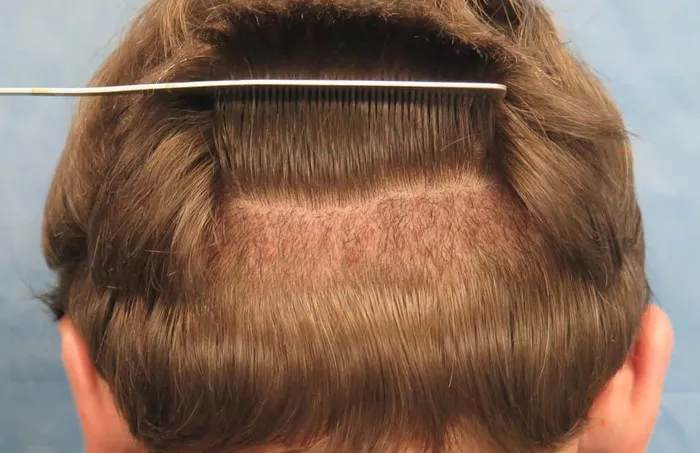In the realm of hair restoration, FUE (Follicular Unit Extraction) has emerged as a popular and advanced technique. As individuals consider this transformative procedure, a fundamental question arises: How long does a FUE hair transplant last? In this detailed exploration, we will delve into the intricacies of FUE, unraveling the factors that influence its longevity and offering insights into what individuals can expect from this cutting-edge hair restoration method.
1. The FUE Procedure: A Pioneering Approach to Hair Restoration
To grasp the duration of FUE hair transplants, it’s crucial to understand the intricacies of the procedure itself. FUE involves the meticulous extraction of individual hair follicles from the donor area, typically the back or sides of the scalp, and their transplantation to the targeted areas experiencing hair loss.
a. Minimally Invasive Nature of FUE
FUE distinguishes itself with its minimally invasive nature. The use of micro-punches for follicle extraction results in tiny, nearly imperceptible scars, making it an appealing option for those seeking a discreet and effective solution.
b. Precise Graft Placement
The precision in graft placement is a hallmark of FUE. Surgeons carefully select and transplant individual follicular units, ensuring a natural and aesthetically pleasing hairline that seamlessly integrates with existing hair.
c. Versatility in Application
FUE’s versatility extends to its applicability for various degrees of hair loss, making it suitable for both minor touch-ups and comprehensive restorations. This adaptability contributes to its widespread acceptance among individuals seeking tailored solutions.
2. The Immediate Aftermath: What to Expect Post FUE Transplant
Understanding the duration of FUE hair transplants involves a comprehensive examination of the immediate aftermath of the procedure. This phase sets the foundation for the subsequent stages of recovery and regrowth.
a. Recovery Period and Initial Shedding
Post FUE transplant, individuals typically experience a recovery period of a few days. It’s common to observe initial shedding of transplanted hair, but this is a temporary phase, and regrowth begins within a few months.
b. Patience in the Regrowth Phase
The regrowth phase is a pivotal aspect of FUE longevity. Patience is paramount as the transplanted hair gradually thickens and matures. Results become more evident and defined over the course of several months.
c. Post-Operative Care Practices
Adherence to post-operative care practices significantly influences the duration of FUE results. This includes following the surgeon’s guidelines for scalp care, avoiding strenuous activities, and taking prescribed medications to support healing and minimize complications.
3. Factors Influencing the Longevity of FUE Hair Transplants
The longevity of FUE results is influenced by various factors that individuals should be aware of before undergoing the procedure. A comprehensive understanding of these aspects contributes to realistic expectations and informed decision-making.
a. Individual Genetics and Aging
Genetics play a pivotal role in determining the longevity of FUE results. While the transplanted hair is often permanent, the natural aging process and individual genetic factors can impact the existing native hair.
b. Post-Transplant Care Practices
Long-term success hinges on meticulous post-transplant care. Protecting transplanted hair from harmful UV rays, maintaining a healthy lifestyle, and following a regular hair care routine contribute to the sustained health of both transplanted and existing hair.
c. Choosing a Skilled Surgeon
The skill and expertise of the surgeon performing the FUE transplant significantly influence the longevity of results. Opting for a board-certified and experienced surgeon ensures precision in graft placement and minimizes the risk of complications.
4. Maximizing Longevity: Tips for Post-FUE Care and Maintenance
Empowering individuals with practical tips for maximizing the longevity of their FUE results is integral to their overall satisfaction. These tips encompass a range of aspects, from lifestyle choices to ongoing care practices.
a. Commitment to a Healthy Lifestyle
Adopting a healthy lifestyle, including a balanced diet, regular exercise, and stress management, supports overall well-being and contributes to optimal hair health, both transplanted and native.
b. Sun Protection and Hair Care Practices
Protecting transplanted hair from harmful UV rays through the use of hats or sunscreen is crucial. Additionally, adopting gentle hair care practices, such as avoiding harsh styling and minimizing heat exposure, helps maintain the integrity of transplanted follicles.
c. Regular Follow-ups with the Surgeon
Establishing a relationship with the FUE transplant surgeon and attending regular follow-up appointments allows for ongoing evaluation of results and proactive intervention if any issues arise. Surgeon-guided careenhances the longevity of the transplant.
d. Monitoring Hormonal Changes
Staying vigilant about hormonal changes and addressing imbalances promptly contributes to sustained hair health. Regular check-ups with a healthcare provider ensure timely intervention if hormonal fluctuations impact hair.
See Also: Is FUT Hair Transplant Worth It: Making the Right Decision
In conclusion
The longevity of FUE hair transplants is a multifaceted journey influenced by the procedure itself, individual factors, and post-operative care. Armed with a comprehensive understanding of these dynamics, individuals can approach FUE with realistic expectations and a commitment to ongoing care practices, ensuring the enduring success of their transformative hair restoration experience.


